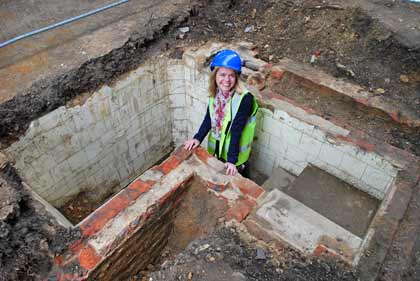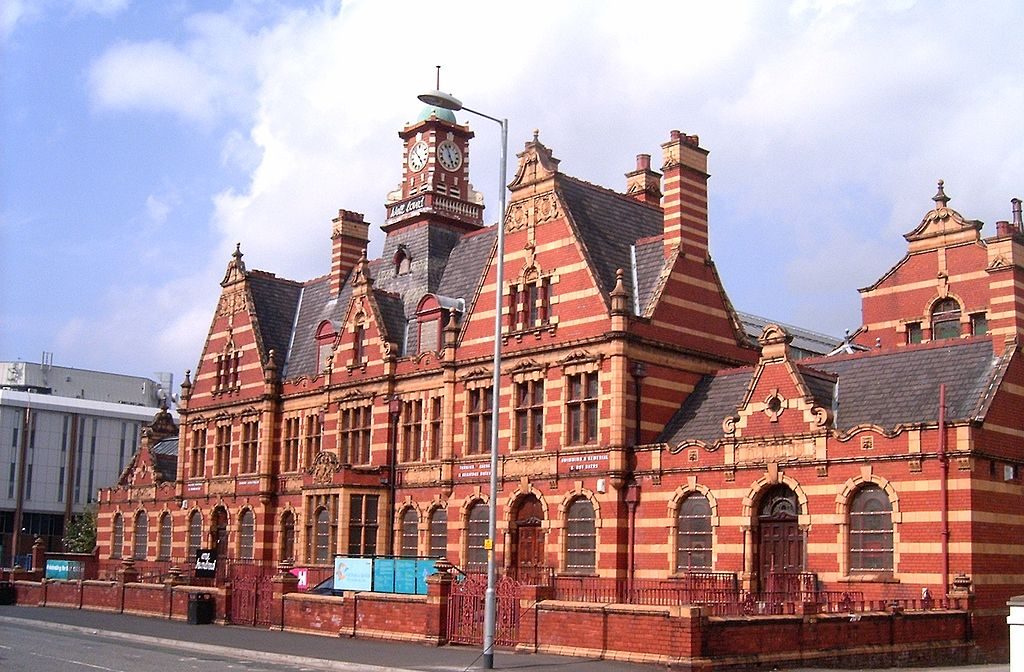“At first we were confused about what it was because of the shape and size of it, but then we had a eureka moment.” – Joe Prentice.

PHOTO: culture24.org.uk
NORTHAMPTON, ENGLAND – Archaeologists made a baffling discovery when working on a 12th century Cluniac nunnery named Delapre Abbey.
Currently, Delapre Abbey is undergoing extensive and expensive work to tell the story of the building as it existed as a war office in World War II and a record office for much of the 20th century. It’s an ongoing project that’s costing England upwards of $7 million.
Experts working with the Delapre Abbey Preservation Trust were excavating an area north of the man building when they discovered an odd L-shaped pool with steps leading down on both sides.
It took them a while to realize what the pool was for, but eventually they figured it out. It’s a Victorian plunge pool.
“By the time you reach the late 19th century,” Joe Prentice, an archaeological building specialist working with the Delepre Abbey Preservation Trust said, “places like Delapre had plumbing, which meant they could have these kinds of baths. Also in the late 1800s – perhaps the 1880s or 1890s – into the period just pre-war, there was a bit of a fad for healthy living, and a belief in the healing effect of plunging into cold water.”
For much of England’s early history, people believed bathing was actually bad for your health. However, as new scientific discoveries were made and people began to realize the importance of taking baths in staying healthy and preventing the spread of disease, bathing become something of a social event, much like it used to be in Ancient Rome.

Victoria Baths [PHOTO: wikimedia]
As science progressed, Victorians became increasingly conscious of their health, even while smallpox, cholera, and other deadly diseases raged – especially in the slums of East London. Doctors advertised all sorts of cures, from mercury to stave off STDS to “Chillie paste” to cure everything from bronchitis and a sore throat to gout and arthritis.
This is, too, incidentally where health resorts suddenly gained popularity. Real doctors and quacks alike opened up resorts for ill people to come and be cured of all their sicknesses.
One famous example of a 20th century health resort is the Battle Creek Sanitarium. It was a health resort started by the Kellogg brothers and based on the Seventh-day Adventist Church health principals. It sported its own baths and plunge pools, as Harvey Kellogg firmly believed that “as a tonic, cold water [had] no superior”.
Kellogg was also a strong supporter of a low-fat, low-protein diet that emphasized whole grains, fiber-rich foods, and nuts. He emphasized fresh air, exercise, and hygiene above all else.
Some believed him to be an utter quack. Others lived by his methods. He had some pretty weird ideas, too, but at least he wasn’t a fan of the infamous Victorian “electrotherapy”.
So, plunge pools like the one found in Northampton certainly aren’t unique. They’re part of a larger obsession with physical health and strange cures that characterized the early and mid-20th century.
The plunge pools at Delepre Abbey were probably mostly designed to be used by health-conscious visitors who refused to sacrifice their health just to visit the abbey.
The renovations and excavations at Delapre Abbey are due to be finished by November of this year, when, for the first time in its long 900-year history it will open for viewing by the general public.

